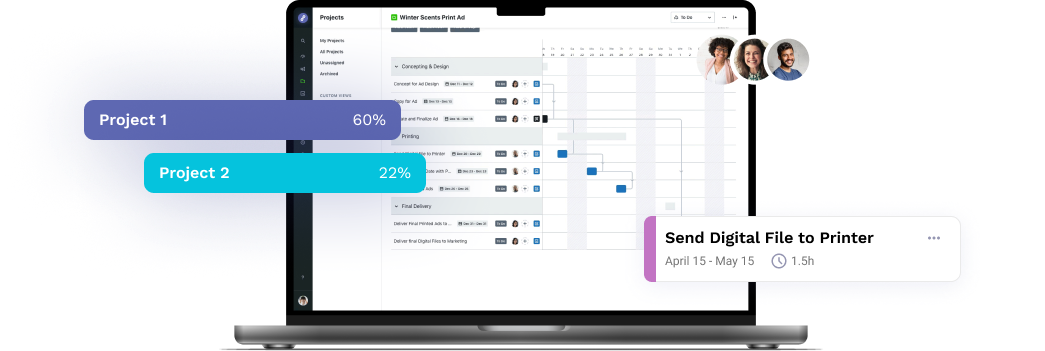
In Brief
SDSU Extension isn’t your typical in-house marketing agency. As the official outreach arm of South Dakota State University, the team supports every county in the state with critical public-facing content, from food safety flyers to resources for agriculture producers. Managing reviews for 2,000 projects annually across formats and contributors is no small feat.
However, for Educational Technology Content Manager Lindsey Gerard, the challenge wasn’t just about volume. It was about building a system that could support faculty, staff, and external vendors while maintaining brand, accessibility, and academic standards.
“Every piece of content we produce is designed to help someone. When reviews slow us down, we lose impact. Lytho changed that.”
The Stats
0K
Projects per year
0.2
Versions per proof compared to 15 before Lytho
0%
Decrease in proof versions since implementing Lytho
0%
of South Dakota counties served
The Challenge: Too Many Channels, Not Enough Clarity
Before Lytho, feedback lived in inboxes, and the team had little visibility into who had reviewed what or when. Lindsey recalled, “We had a home-baked request system… but all our collaboration and proofing had to happen in email. And you know how that goes… who has it? Who approved it? Did the email even get to them? Things would get stuck for months.”
Without version control or a centralized place to align, the process often delayed content that could’ve been making a difference for South Dakota communities. “We needed something where everyone could see the same thing at the same time,” she said. “And Lytho gave us that. It’s become a shared space where everyone knows what’s expected.”
Why it matters: A public-facing mission demands precision, visibility, and speed. Without structure, important content was stuck in limbo, and so was its impact.
The Solution: Structure That Supports Everyone
Lindsey and her team implemented Lytho to bring consistency, visibility, and accountability to the review process. “When we tag someone in Lytho, it’s visible. Everyone sees when something was reviewed and by whom. It’s made it so much easier to track,” Lindsey shared.
With role-based routing and tagging, content was now reviewed by the right people at the right time. The visibility drastically reduced confusion and ensured feedback wasn’t just captured but actioned.
Why it matters: Operational efficiency across deliverables and channels is a CMO dream. This eliminates fragmented review chaos and aligns internal teams and stakeholders alike.
“You have to add structure to improve flexibility. It sounds backwards, but it’s how we got faster.”
Flexibility Through Process
Lindsey credits much of the success to being able to fine-tune the process over time. “I was watching the numbers, especially on our time to proof and time to finish, and I was like… maybe the problem is us. So, I did a lot of workshopping,” she said.
She pulled some tasks upstream, clarified roles, and shifted deadlines to due dates, creating room for flexibility without losing accountability. This became especially helpful when collaborating with faculty or external vendors.
Most importantly, the team learned that structure doesn’t slow creative teams down — it speeds them up. “You have to add structure to improve flexibility. It sounds backwards, but it’s how we got faster,” Lindsey shared.
Why it matters: To move fast and scale successfully, you can’t skip process — you have to start with it. But process only works when there’s buy-in. By building a system that encourages accountability without sacrificing flexibility, SDSU Extension proved that structure isn’t a barrier to creativity, it’s what unlocks it.
The Cultural ROI: Real-time Problem Solving
For Lindsey, the real shift didn’t come from just implementing a new tool, it came from what that tool made possible. “We run around 2,000 projects, but many involve vendor relationships and don’t follow the traditional path,” she explained. “Lytho helps us keep an eye on all of it.”
That visibility empowered her team to take a more strategic approach to how content gets reviewed. Instead of routing each piece separately, they began bundling related deliverables into campaign-level projects. “We build projects, so you get a comprehensive proof all at once — print, video, design — so if you want to change the date, it gets changed everywhere,” Lindsey said.
That kind of operational clarity doesn’t just save time, it aligns everyone involved. With stakeholders and reviewers working from the same version at the same time, confusion and duplication fell away. “We used to feel like mediators between creatives and clients,” Lindsey shared. “Now we have data. We can deal with reality and solve the problem. Not next month at a meeting, but today.”
What began as a quest to organize feedback evolved into a culture shift. Teams no longer had to guess where a project stood or wonder whether their input had been seen. The process became transparent and, with it, trust was built.
In conclusion: Lytho didn’t just streamline workflows for SDSU Extension — it created the conditions for faster decisions, fewer errors, and more meaningful collaboration. In a mission-driven environment where every project supports public education, that kind of ROI is hard to overstate.
Do you want to give yourself and your creative team more room for creative stimulation by automating the boring stuff? Lytho helps you streamline your entire workflow and harmonize all brand collateral under a single, uniform platform. Feel free to reach out to us by scheduling a demo and learning how our creative solutions can boost the effectiveness of your creative projects. We look forward to speaking with you!

Ready to simplify your creative operations and start having a little fun at work again? Schedule time to talk with us.
Let us show you how Lytho’s Creative Operations Platform helps in-house creative and marketing teams do better work, ease the stakeholder experience, and stay on brand.
Schedule a Demo